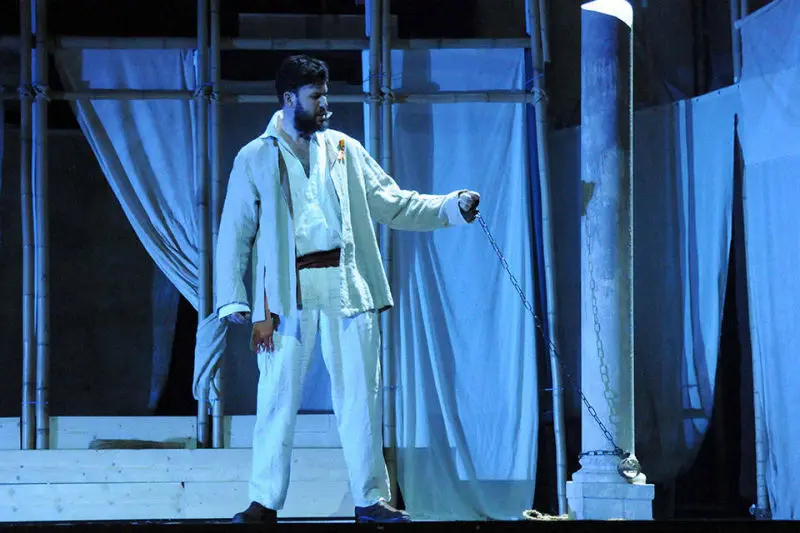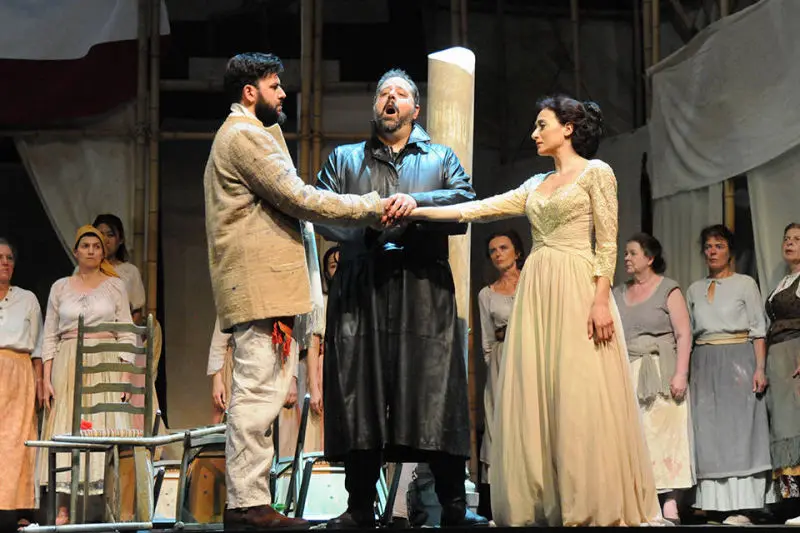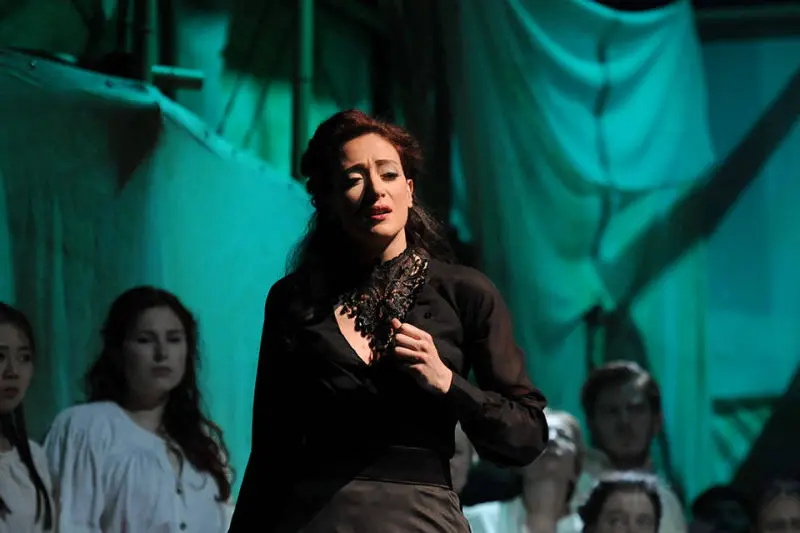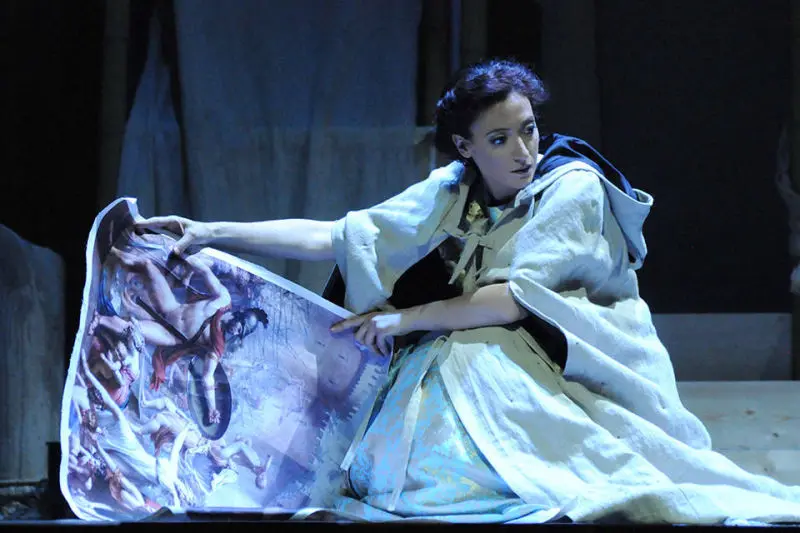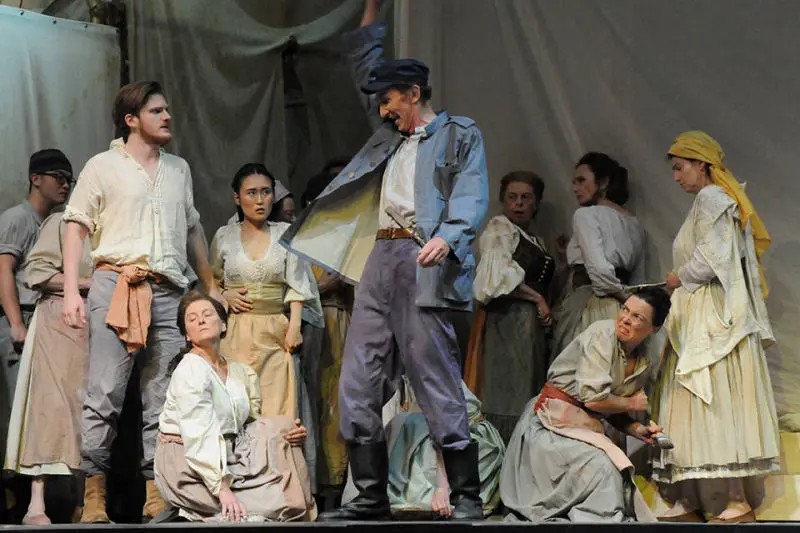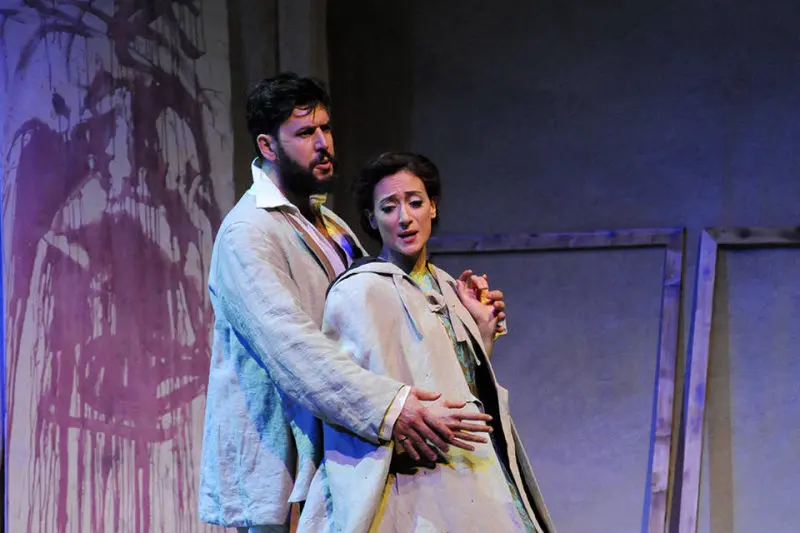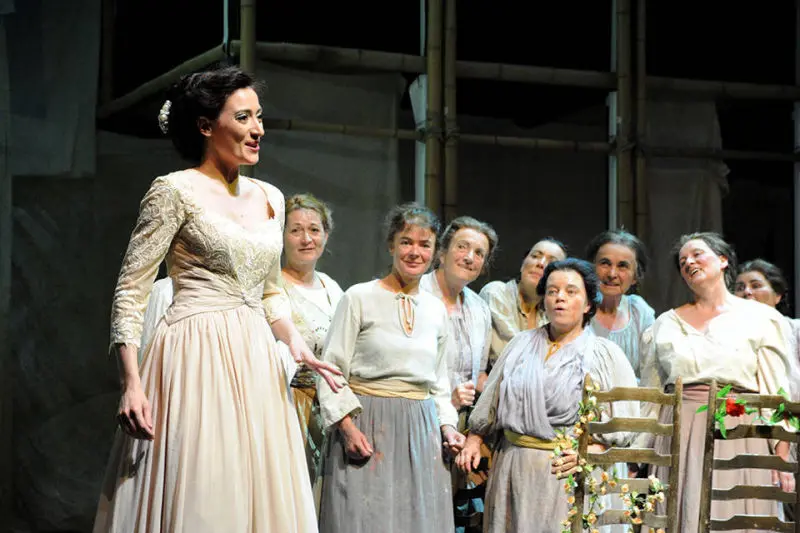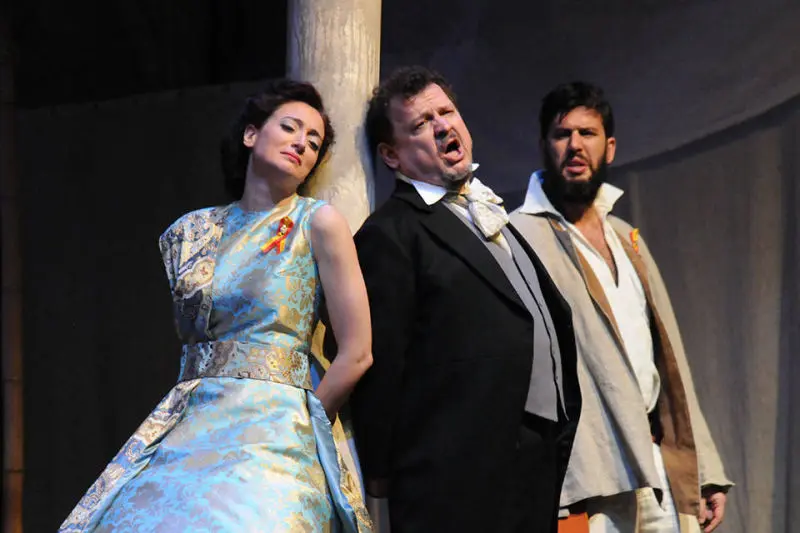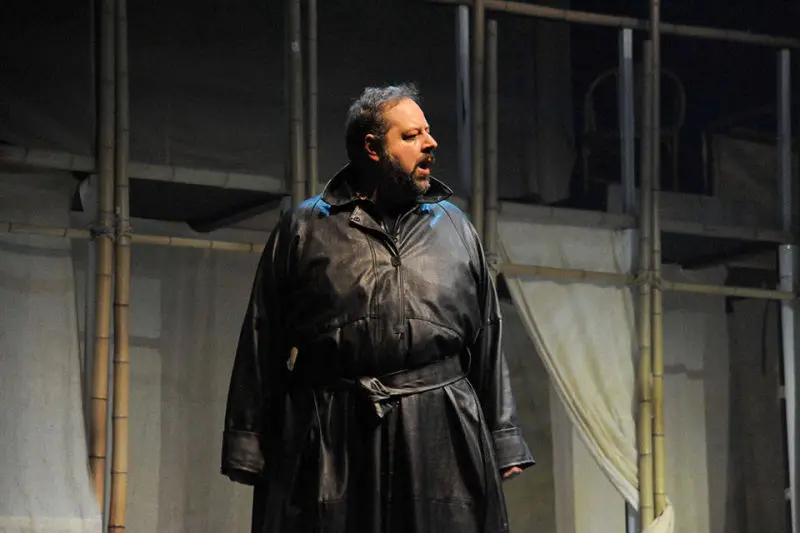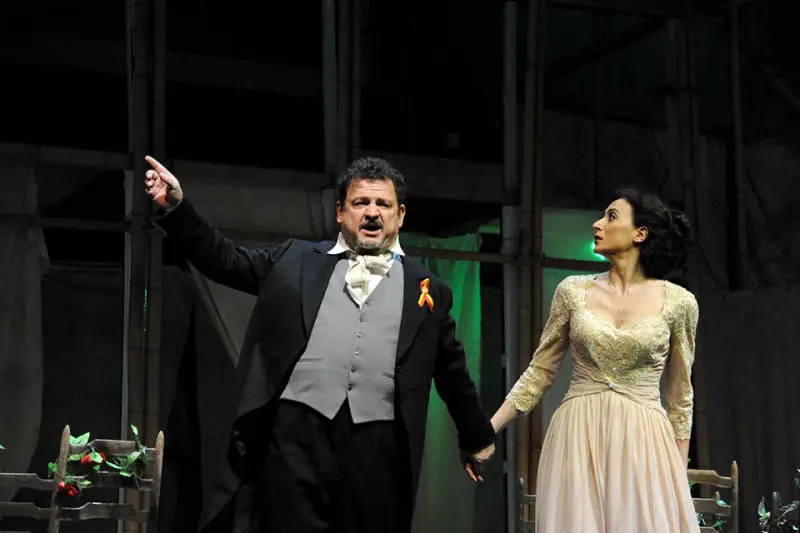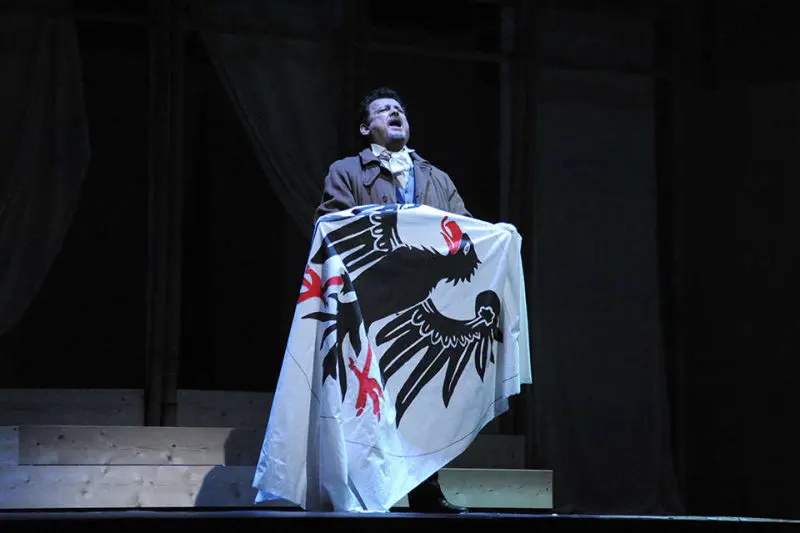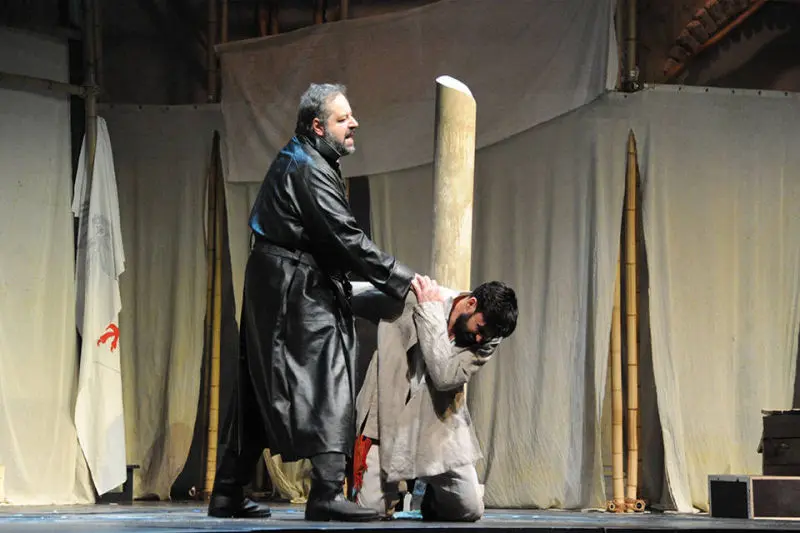I VESPRI SICILIANI
Music Giuseppe Verdi
Libretto Eugène Scribe and Charles Duveyrier
ARTISTIC TEAM
Conductor Cornelia von Kerssenbrock
Stage designer Stefano Simone Pintor
Set designer Nikolaus Hipp
Costume designer Kerstin Rossbander
Video designer Francesco Mori
Lighting designer Arndt Sellentin
Dramaturg Florian Maier
Orchestra Münchner Symphoniker
Choir Festivalchor Immling
CAST
La Duchessa Elena Emanuela Torresi
Arrigo Angelo Fiore
Guido di Monforte Stefano Meo
Giovanni da Procida Alexander Teliga
Danieli Santiago Sanchez
Ninetta Hyunjeong Ellen Yu
Tebaldo Aliahmad Ibrahimov
Il Conte Vaudemont / Roberto John Sweeney
Il Sire di Bethune Svyatoslav Besedin
Manfredo Yonghuan Ji
TOUR
The production was staged at the Immling Festival, Bavaria (Germany) during summer 2017.
DIRECTOR'S NOTES
The Sicilian population is suffering under the violent rule of the French. A resistance movement has formed in secret - their objective: revenge for the death of the previous Governor of Palermo, Duke Frederico, and restoration of the former Government. In Verdi's opera two seemingly irreconcilable parties confront each other, exhibiting characteristic recurrent patterns of human frailty.
"I vespri siciliani" is based on an historical uprising in the year 1282. Time, space, and protagonists and above all two power principles at the centre of the plot - domination and oppression - are interchangeable with almost any other world conflict even today. Sicily as the scene of the action represents "country" as a geographically delineated term but is a symbol of both national and local interests in the field of international tension. The exercise of power in a region leaves visible traces. Irrespective of whatever type of governmental rule these range from cultural heritage to technical products and the insignia of power. The latter were built during the years under Governor Duke Federigo - and have disappeared with him. Now they form the youngest part of the soil of a country with a changeful history - similar to the statue of a power holder, which crashes to the ground when his power ends and crumbles into innumerable pieces and mixes with the sediment of its predecessors.
A burned and cracked terrain such as that of Sicily makes it almost impossible to make out the differences between the remains of the symbols of the power of the last ruler, and of previous layers of soil. Symbolically, this leads to the idea that the soil on which the characters move in Verdi's opera, is nothing more than the sum of the different layers of the past forms of the State. Guido di Monforte walks on this in Duke Federigo’s reconstructed palace which was damaged in the French power grab and he is thus inseparably bound by the layers of soil below. He is only the latest link in a continuous chain of riots and revolutions.
We have all lost, because we are all the same. We are no different from our predecessors and our successors will not differ from us. Regardless of era and origin mankind never changes.
